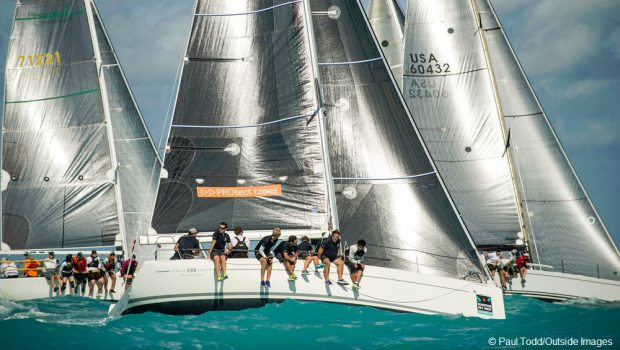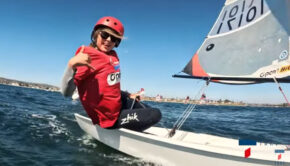The Handicap Racing Question
Published on March 30th, 2017
American handicap racing in the U.S. is bogged down in rating systems and acronyms, so how can we make sense of it? In Sailing World magazine (March/April 2017), Scuttlebutt editor Craig Leweck details how the situation is hurting the sport.
In the ’70s and ’80s, if you were keen to race your cruising boat, PHRF was the handicap rule of choice. For furniture-laden production boats saddled with performance compromises, PHRF was an easy gateway into competitive sailing. There were also designers and custom builders devising faster and leaner boats for owners wanting to compete at a higher level. IOR was their racing fleet. It was a technical rule, used internationally, which allowed owners to compete on the world stage. In the heydays, top IOR teams had global respect. This two-tiered rating rule hierarchy essentially remains the model in most countries today: There’s a gateway rule and a technical rule. Not so in the United States.
While PHRF serves the vast majority of local handicap racers, American owners now have a shopping list of more-technical options — IRC, ORC and ORR — none of which are compelling enough to outwit the other. Having too many options is negatively impacting participation. Handicap fleets need tiers of competition, providing a ladder for owners and teams to climb and find their appropriate level. Local, regional, national, and international steps create inspiration and motivation. A unified rule fosters confidence with owners and provides direction to designers and builders, encouraging them to invest in the development of new boats and equipment. I see this in other countries where there’s a commitment to a technical rule, but not so much in the United States. Without a compelling reason to invest in racing programs, we instead see older boats with handy age allowances focused on local and regional sailing.
Lacking high-level big-boat handicap racing, many of these same people have joined smaller keelboat one-design fleets, bringing their grand-prix budgets into the Corinthian realm. My dad had boats in the 25-foot range, contending he could race at a high level without being outspent. Today, he says, that wouldn’t be the case. With fleet numbers in decline since the 1980s, PHRF has become the catch-all. “We have seen some drop at the top end but a significant drop in participation in recent years of the midlevel racers,” says Bruce Bingham, chair of the U.S. PHRF Committee. “We know boats are still out there because owners dutifully get certificates each year, but maybe race one or two of their favorite regattas instead of all season long.” Bingham says the lack of a uniformly accepted high-level measurement rule is negative impacting PHRF. “It is too much to ask of PHRF to support a mixed fleet across all skill levels in the same class,” says Bingham. “PHRF was never intended to rate the top end of the fleet where thousands of dollars (or more) are spent to gain a few seconds per mile.”
Full report… click here.









 We’ll keep your information safe.
We’ll keep your information safe.